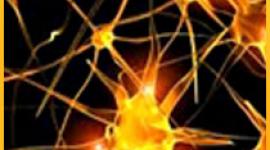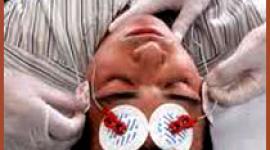An Introduction to Neuropsychological Assessment
 Clinical neuropsychology is a specialized field of endeavor which seeks to apply the knowledge of human brain-behavior relationships to clinical problems. Human brain-behavior relationships refer to the study of research-derived associations between an individual's behavior, both normal and abnormal, and the functioning of his or her brain. The clinical neuropsychologist takes extensive measurements of a variety of kinds of human behavior, including receptive and expressive language, problem-solving skills, reasoning and conceptualization abilities, learning, memory, perceptual-motor skills, etc. From this complex and detailed set of behavioral measurements, a variety of inferences can be drawn relating directly to the functioning of an individual's brain. In clinical neuropsychology, the operation and condition of an individual's brain is assessed by taking measures of his or her intellectual, emotional and sensory-motor functioning.
Clinical neuropsychology is a specialized field of endeavor which seeks to apply the knowledge of human brain-behavior relationships to clinical problems. Human brain-behavior relationships refer to the study of research-derived associations between an individual's behavior, both normal and abnormal, and the functioning of his or her brain. The clinical neuropsychologist takes extensive measurements of a variety of kinds of human behavior, including receptive and expressive language, problem-solving skills, reasoning and conceptualization abilities, learning, memory, perceptual-motor skills, etc. From this complex and detailed set of behavioral measurements, a variety of inferences can be drawn relating directly to the functioning of an individual's brain. In clinical neuropsychology, the operation and condition of an individual's brain is assessed by taking measures of his or her intellectual, emotional and sensory-motor functioning.
In studying brain functioning by measuring behavior, the clinical neuropsychologist makes use of a specialized set of tools which is appropriately labeled the clinical neuropsychological evaluation. This instrument is generally composed of numerous psychological and neuropsychological procedures which measure various abilities and skills. Some of these procedures are drawn from psychology (WAIS-R, Form Board in TPT) and others have been developed specifically from neuropsychological research (Category Test, Speech Sounds Perception Test, etc.). These strictly neuropsychological procedures compose the greater part of the evaluation, especially since they were developed specifically to assess brain functioning by measuring higher mental abilities. Still other procedures in the evaluation were borrowed directly from neurology (certain items on Aphasia Screening; Sensory Perceptual Examination) and were standardized in their administration. Some of the procedures in the evaluation are rather homogeneous in that they depend on mainly one ability or skill for success or failure (Finger Oscillation Test primarily relies on motor tapping speed). Other procedures are more heterogeneous and depend on the organized and complex interaction of several distinct skills or abilities for success (Tactual Performance Test - tactile perceptual ability; appreciation of two-dimensional space; planning and sequencing ability; etc.). In all, the clinical neuropsychological evaluation gives the practitioner in this field a wealth of information about an individual's unique pattern of skills and abilities.
The clinical neuropsychological evaluation has essentially two main purposes: one involving diagnosis and the other involving behavioral description. The diagnostic power of a neuropsychological instrument, such as the Halstead-Reitan Battery, has been well documented and need not be discussed in detail (Vega and Parsons, 1967; Filskov and Goldstein, 1974; Reitan and Davison, 1974). In neuropsychological diagnosis, the presence or absence of impairments in brain functioning can be determined along with other important factors, such as lateralization, localization, severity, acuteness, chronicity or progressivity, and type of impairment suspected of being present (tumor, stroke, closed head injury, etc.). Four primary methods of inference are utilized in making these determinations, namely, level of performance, pathognomonic sign, comparison of the two sides of the body and specific patterns of test scores.
The level of performance approach primarily involves determining how well or how poorly an individual performs on a certain task, usually by means of a numerical score. Cut-off scores are generally developed for such a task, which allow the practitioner to classify an individual as either impaired or unimpaired with respect to brain functioning, depending upon whether his score falls above or below the cut-off value in use. The Halstead Category Test provides an example of this level of performance approach. On this procedure, a score of 51 errors or above places an individual in the impaired range. Likewise, a score of 50 errors or below places the individual in the normal range generally characteristic of individuals with unimpaired brain functioning. The primary danger of using level of performance measures alone to diagnose brain dysfunction is that of classification errors. In most cases, the cut-off score will not completely separate individuals with brain dysfunction from those without. Therefore, both false-positive and false-negative errors can be expected, depending upon the particular cut-off score established. Such a procedure in fact used in isolation is tantamount to employing single tests to diagnose "brain damage, and this approach has been justly criticized in previous work (Reitan and Davison, 1974). Additional methods of inference are used in neuropsychological assessment in order to sharpen diagnosis and minimize errors.
The pathognomonic sign approach essentially involves identifying certain signs (or specific types of deficient performance) which are always associated with brain dysfunction whenever they occur. An example of such a pathognomonic sign would be an instance of dysnomia on Aphasia Screening made by an individual with a college degree and normal IQ values. Such an individual would not be expected to say "spoon" when shown a picture of a fork and asked to name this object. The appearance of a true pathognomonic sign in a neuropsychological evaluation can always be associated with some sort of impairment in brain functioning. However, the converse is not true. That is, the absence of various pathognomonic signs in a particular individual's record does not mean that this individual is free of brain dysfunction. Thus, using, the pathognomonic sign approach alone, one runs a considerable risk of making a false-negative error or discounting the presence of brain dysfunction when it in fact does exist. If other methods of inference are employed with this approach, however, then the likelihood is increased that any brain dysfunction present will be identified even in the absence of pathognomonic signs. Therefore, one may again see the value of and necessity for multiple and complimentary methods of inference in clinical neuropsychology.
The third method of inference involves a comparison of the performances of the two sides of the body. This method was borrowed in principle almost directly from clinical neurology but involves measurement of a variety of sensory, motor and perceptual-motor performances on the two sides of the body and comparing these measures with respect to their relative efficiency. Since each cerebral hemisphere governs (more or less) the contralateral side of the body, some idea of the functional condition of each hemisphere relative to the other can be gleaned from measuring the performance efficiency of each side of the body. An example here is the Finger Oscillation Test. Here, tapping speed in the dominant hand is compared with tapping speed in the non-dominant hand. If certain expected relationships are not obtained, then inferences with respect to the functional efficiency of one hemisphere or the other can be made. This inferential approach provides important corroborative and complementary information, especially with respect to lateralization and localization of brain dysfunction.
The final, method of inference to be discussed is that of specific patterns of performance. Certain scores and results may combine into particular patterns of performance which carry important inferential meaning for the clinician. For example, the relative absence of constructional dyspraxia, sensory-perceptual deficits, and aphasic disturbances, together with significant deficits on grip - strength, Finger Oscillation and the Tactual Performance Test, may possibly be associated with brain dysfunction which is more anterior in location than posterior. As another example, severe constructional dyspraxia with an absence of aphasic disturbances, together with severe sensory and motor losses in the left upper extremity, is likely associated with dysfunction in the right hemisphere rather than in the left.
Clinical neuropsychological diagnosis of brain dysfunction is carried out utilizing four primary methods of inference in a complex yet integrated fashion. Each of these methods is dependent upon and complementary to the others. The strength of neuropsychological diagnosis lies in the simultaneous utilization of these four methods of inference. Thus, some particular impairment in brain functioning may yield relatively normal levels of performance but, at the same time, may produce certain pathognomonic signs or yield patterns of performance which are clearly associated with brain dysfunction. The cross-checks and multiple avenues of gaining information, made possible by the simultaneous use of these four methods of inference, allow sound and accurate diagnosis of brain dysfunction by the experienced clinical neuropsychologist.
The second major purpose of clinical neuropsychology, as mentioned above, is behavioral description and delineation of behavioral strengths and weaknesses. This type of formulation can be most essential in making recommendations for an individual's treatment, disposition and management. This, in fact, is considered by some practitioners to be the most important function of the clinical neuropsychological evaluation. Behavioral description is the clinical neuropsychologist's unique input into a patient's total medical workup. Other specialists, notably the neurologist and neurosurgeon, are excellent neurological diagnosticians, and it is not the purpose of clinical neuropsychology to compete with these individuals or attempt to take their place. Thus, neuropsychological diagnosis can be considered an additional avenue of diagnostic input into a patient's workup. Behavioral description, on the other hand, is the clinical neuropsychologist's unique domain. Here, this practitioner can provide input into a patient's total medical picture which is not available from any other source.
Behavioral descriptions should start out with a thorough understanding of the patient's background, his educational level, his occupation, his age, his likes, dislikes, future plans, etc. This information is usually brought into play subsequent to a blind analysis of the patient's neuropsychological evaluation and a preliminary diagnosis and behavioral description based on this analysis. Before the final behavioral description and recommendations are given, however, the patient's background information is integrated into the formulation. Here, the clinical neuropsychologist can look at the particular patient's pattern of intellectual and adaptive strengths and weaknesses shown on the neuropsychological evaluation and integrate these findings with the patient's individual situation. This can be considered to be a very important process in terms of formulating specific, meaningful and directly applicable recommendations for the particular individual under study.
Specific issues which often warrant coverage in neuropsychological behavior description involve a variety of areas. From the clinical neuropsychological evaluation, specific areas in need of rehabilitation can be identified, as well as areas of behavioral strength which warrant the individual's awareness. Advice on coping with environmental demands in the face of particular behavioral deficits is often necessary, as well as some realistic prediction of future change in neuropsychological status. The degree of behavioral deficit in various areas can often be specified and questions with respect to a patient's ability to manage himself and behave adaptively in society can be answered directly. Forensic issues can often be dealt with in terms of providing direct, clear information with respect to a patient's judgment, competence, degree of intellectual and adaptive loss following brain disease or trauma, etc. Other specific areas in which the clinical neuropsychological evaluation can provide input include educational potential, occupational potential, the effects of brain dysfunction on social adjustment, etc. The importance of the behavioral picture of a patient obtained from the neuropsychological evaluation is immense.
As mentioned above, the clinical neuropsychological evaluation is not meant to compete with or take the place of more traditional medical procedures. In fact, certain important differences exist between the clinical neuropsychological evaluation and these procedures. First of all, the neuropsychological evaluation is primarily concerned with higher mental abilities, such as language, reasoning, judgment, etc. Traditional neurology, on the other hand, emphasizes assessment of sensory and motor functions and reflexes. Thus, although the neurologist and neuropsychologist study the same general phenomenon, that is, nervous system function and dysfunction, these practitioners nevertheless emphasize different aspects of this phenomenon. The clinical neuropsychologist takes precise and specific measurements of a variety of aspects of higher cortical functioning. The neurologist, on the other hand, primarily concentrates on lower-level phenomena of nervous system functioning. The results of these two types of evaluation may not always agree, given the different aspects of the central nervous system emphasized and the different methods and procedures used by each of these practitioners. Logically, the clinical neuropsychological assessment and the neurological evaluation should be considered complementary to each other. Certainly, neither one is a substitute for the other. Where possible, both of these procedures should be employed in order to obtain a full and detailed picture of an individual's central nervous system functioning.
Traditional psychological assessment procedures and the clinical neuropsychological evaluation also have a number of differences worth noting. In traditional psychological assessment, for example, an individual's average or modal performance is usually desired. On the neuropsychological evaluation, however, the examiner strives to obtain an individual's best or optimal performance. Considerable encouragement and positive support is given to the patient during a neuropsychological evaluation to perform as well as possible. Such encouragement is generally not given under traditional psychological assessment conditions. Additionally, psychological procedures, such as the Rorschach, MMPI, Wechsler Intelligence Scales, Draw-A-Person, etc., have traditionally been used by psychologists who diagnose brain damage and disease. Although each of these procedures may contribute significant information about a person's behavior, their validity in detecting the presence or absence of brain dysfunction and determining the nature and location of the dysfunction is rather limited. These assessment procedures have not been developed specifically for the purpose of identifying and describing brain damage and disease. The clinical neuropsychological evaluation, on the other hand, has been developed specifically for this purpose and has been validated against stringent medical criteria, such as surgical findings and autopsy reports. In addition, traditional psychological assessment procedures generally do not make use of the multiple inferential methods employed by the clinical neuropsychological evaluation. Oftentimes, only one or at most two inferential methods are used with traditional psychological assessment procedures in making determinations of the presence or absence of brain dysfunction. Thus, the comprehensive approach to making inferences and drawing conclusions used by the clinical neuropsychologist is felt to be superior to more traditional psychological methods in the diagnosis and description of brain dysfunction.
References
Filskov, S. & Goldstein, 5. (1974). Diagnostic validity of the Halstead-Reitan Neuropsychological Battery. Journal of Consulting and Clinical Psychology, 42(3), 382-388.
Lezak, M.D. (1983). Neuropsychological Assessment. New York: Oxford University Press.
Reitan, R.M. & Davidson, L..A. (1974). Clinical Neuropsychology: Current Status and Applications Washington: VJ-I. Winston & Sons.
Vega, A., & Parsons, 0. (1967). Cross-validation of the Halstead-Reitan Tests for brain damage. Journal of Consulting Psychology, 3 1(6), 6 19-625.
Dr. Alan E. Brooker is a clinical neuropsychologist with the Department of Mental Health at the David Grant USAF Medical Center. Travis Air Force Base, CA. 94535.
next: Bilateral and Unilateral ECT: Effects on Verbal and Nonverbal Memory
~ all Shocked! ECT articles
~ depression library articles
~ all articles on depression
APA Reference
Staff, H.
(2007, February 17). An Introduction to Neuropsychological Assessment, HealthyPlace. Retrieved
on 2025, November 12 from https://www.healthyplace.com/depression/articles/an-introduction-to-neuropsychological-assessment



